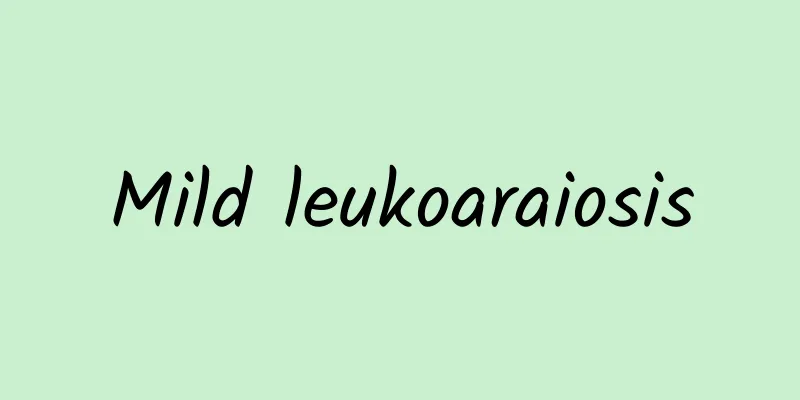Mild leukoaraiosis

|
Many people are not particularly familiar with mild proteinoscopy. In fact, this is a term in radiology. It refers to an image that appears during a CT or MRI examination. It can be divided into mild, moderate and severe according to the extent of the lesion. The occurrence of proteinoscopy is related to many factors, for example, it shows a certain proportional relationship with age. The concept of mild leukoaraiosis Leukoaraiosis is an imaging concept, mainly a demyelinating disease of nerve conduction fibers caused by diffuse cerebral ischemia. The most important disease to be identified is subcortical arteriosclerotic leukoencephalopathy, also known as Bingswanger disease. The typical clinical manifestation is chronic progressive dementia. Thought processing speed slows down and cognitive function declines. The main manifestations of brain CT are low-density shadows around the ventricles, and the main manifestations of brain MRI are high-signal shadows on T2-weighted images. The detection of brainstem auditory evoked potentials can be used as a sensitive and objective indicator to detect brainstem function involvement and subclinical lesions, and is one of the means for early diagnosis of leukoaraiosis. Treatment methods: Since leukoaraiosis (LA) often leads to cognitive impairment, the appearance of LA is considered to be an early sign of brain damage. In view of the fact that there is currently no specific treatment for LA, preventing its occurrence and development is of great clinical significance. First of all, the various causes of LA should be treated. Actively prevent and treat cerebrovascular disease, hypertension, hyperlipidemia, brain trauma, diabetes, etc. Vinters reported that amyloid angiopathy changes are common in BD patients, so antiplatelet therapy is not recommended for elderly people with obvious periventricular WMCs to avoid increased risk of hemorrhagic stroke. The risk of cerebral hemorrhage in LA patients using anticoagulants is significantly increased. Many studies have shown that compared with stroke patients without LA, stroke patients with LA have a significantly increased risk of recurrent stroke, a decreased survival rate, an increased incidence of dementia one month after the first stroke and at the end of follow-up, and increased dependence on daily life. Leukoaraiosis is a common disease among the elderly. With the widespread use of CT and MRI, leukoaraiosis is increasingly being found in middle-aged and elderly people. The detection of brainstem auditory evoked potentials is also one of the means for early diagnosis of leukoaraiosis. The main treatments are: using drugs that nourish brain cells such as: Cerebrolysin, Citicoline Diphosphate, Nootropics, Inosine Tablets, etc., quitting smoking and drinking, avoiding eating foods containing alum such as fried dough sticks, etc., and taking symptomatic treatment drugs such as drugs to control mental symptoms. |
<<: What does white matter lesions mean?
>>: What are the effects of high protein levels?
Recommend
White blood cell count is high
As we all know, pregnant women need to undergo a ...
High triglycerides
High triglycerides actually refer to the relative...
Why do I have breast pain before my period?
Female friends may experience breast pain and bac...
What is the cause of the pain in the left side of the waist?
The waist is a part that we are very familiar wit...
What should I do if I have athlete's foot during the lactation period?
Women who are breastfeeding need to be particular...
No matter how good the medicine is, it is not as good as these methods
In daily life, many men hope to be virile, have a...
Pulse and heartbeat
Many people do not know the relationship between ...
The best Chinese medicine for treating stubborn insomnia
Insomnia is a very common phenomenon in life. Man...
Actinolite causes cancer
There are many stones in the world, and they also...
The harm of facial paralysis and the method of treating facial paralysis with traditional Chinese medicine
In clinical practice, most people will learn abou...
I'm about to give birth and I have a dull pain in my lower abdomen. What's going on?
It is normal to experience dull pain in the lower...
There is white stuff on my nipples when I take a shower
It is normal for white substances to flow out of ...
How to prevent high blood pressure? Pay attention to low-salt calcium supplementation
Nowadays, the most common disease among middle-ag...
What fruits should I eat for constipation during pregnancy?
As we all know, pregnant women will have various ...
Treatment of dermatomyositis
Dermatomyositis causes serious harm to the patien...









